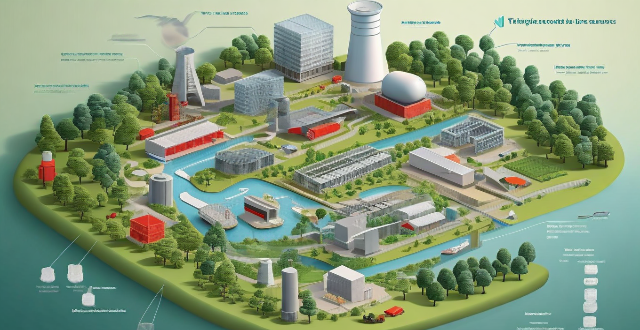Industrial activities significantly impact climate change by emitting greenhouse gases like CO2, CH4, and N2O, contributing to deforestation, relying on fossil fuels for energy, and producing waste. These activities also affect transportation and logistics, leading to further emissions. While some industrial processes release cooling aerosols, they cause other environmental issues. Technological advancements and policy regulations aim to mitigate these impacts by promoting renewable energy, efficiency improvements, and carbon capture.

Industrial Activities and Climate Change
Industrial activities have a significant impact on climate change. The following are some of the ways in which industrial activities influence climate change:
Emissions of Greenhouse Gases
- Carbon Dioxide (CO2): Burning fossil fuels such as coal, oil, and gas for energy production releases large amounts of CO2 into the atmosphere. This is the primary greenhouse gas contributing to global warming.
- Methane (CH4): Industries like agriculture, waste management, and natural gas extraction release methane, a potent greenhouse gas with a shorter atmospheric lifetime but much stronger warming effect than CO2.
- Nitrous Oxide (N2O): Industrial processes like nitric acid production and certain agricultural practices lead to emissions of N2O, another powerful greenhouse gas.
Deforestation and Land Use Changes
- Loss of Carbon Sinks: Industries often require land for infrastructure, mining, and agriculture. This can lead to deforestation, reducing the number of trees that absorb CO2, thus weakening the Earth's natural carbon sinks.
- Albedo Change: Darker surfaces, like cities and paved areas, absorb more sunlight than reflective forests or snow-covered areas, potentially contributing to localized heating effects.
Energy Consumption and Production
- Fossil Fuel Dependence: Many industries rely heavily on fossil fuels for energy needs, leading to increased extraction, refining, and burning of these fuels, which in turn releases more greenhouse gases.
- Energy Inefficiencies: Older industrial technologies often operate with low energy efficiency, resulting in higher energy consumption and greater emissions.
Industrial Processes
- Manufacturing Emissions: Certain manufacturing processes release various gases and particulates that can contribute to air pollution and have indirect effects on climate patterns.
- Waste Generation: Industrial activities produce large amounts of waste, some of which release methane when disposed of in landfills.
Transportation and Logistics
- Shipping and Transport: Industrial goods are often transported long distances by ships, planes, trains, and trucks, all of which burn fossil fuels and contribute to greenhouse gas emissions.
Cooling Effects and Aerosols
- Sulfate Aerosols: While many industrial processes emit greenhouse gases, some also release sulfate aerosols that can have a cooling effect on the atmosphere by reflecting sunlight back into space. However, these aerosols also contribute to acid rain and other environmental problems.
Technological Advancements and Mitigation Efforts
- Renewable Energy: Industries are increasingly adopting renewable energy sources, such as wind, solar, and hydroelectric power, reducing reliance on fossil fuels.
- Efficiency Improvements: Technological advancements allow industries to become more energy efficient, thereby reducing their carbon footprint.
- Carbon Capture and Storage (CCS): Some industries are exploring CCS technologies to capture CO2 emissions before they reach the atmosphere.
Policy and Regulation
- Environmental Regulations: Governments impose regulations on industries to limit greenhouse gas emissions and transition to cleaner technologies.
- International Agreements: Frameworks like the Paris Agreement encourage countries to take action against climate change, including regulating industrial emissions.
In summary, industrial activities significantly influence climate change through various mechanisms, ranging from direct greenhouse gas emissions to changes in land use and energy consumption patterns. However, there are ongoing efforts to mitigate these impacts through technological innovations, policy changes, and international cooperation.